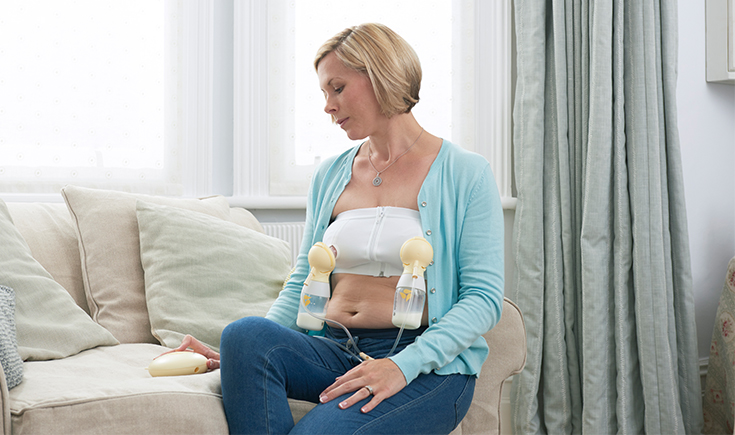

Even if a woman intends to breastfeed her baby before they are born, life doesn’t always go to plan. The reasons some women turn to the breast pump to ensure their baby receives the benefits and value of breast milk is extremely varied. The decision to pump is not made lightly, and it can come with its own set of challenges. However, a woman who exclusively expresses is one dedicated mumma, so we’ve put together this guide to support and inform you on your journey.
Why would a woman exclusively pump breast milk?
- Sometimes she finds it very difficult or impossible to breastfeed, due to reasons such as poor latch, thrush, unresolved breast refusal, or low supply.
- She’s been separated from her baby because she’s returned to work, or due to illness or her baby being born prematurely (and is in the NICU).
- Her baby is unable to feed well at the breast due to medical reasons, such as a cleft palate, a heart problem, poor weight gain, or tongue tie.
- There may be emotional reasons, including feeling embarrassed to breastfeed in front of people. Sometimes a mother finds that life becomes consumed with breastfeeding, which then leads to added stress in an already overwhelming situation, making it even more challenging. Exclusively expressing can bring back some balance to her life, so she is able to focus on enjoying her baby more.
What challenges a mum might face when deciding to exclusively pump
Feelings of failure, guilt, and inadequacy may arise when trying to make this decision. Reading Breastfeeding is natural but it can be difficult too might reassure you. You’re definitely not alone in finding it challenging or that it’s just not for you. Find a community of like-minded mummas who are on the same journey as you (you could join our bottle feeding Facebook support group).
Some mothers feel that they won’t be able to bond with their baby as well as they would if they breastfed. If this is you, please know that you can bond with your baby in many other ways as their primary caregiver. For example, when you cuddle or offer your baby a bottle, you can both experience the wonderful benefits of kangaroo care (skin-to-skin contact).
How to get started with pumping exclusively
- If you’re still in the hospital, you can ask your midwife to show you how the pump works and how to position it. It will be small amounts of colostrum at first, and then as your milk ‘comes in’ after a few days, it will gradually increase. Don’t be alarmed if you don’t get very much milk.
- If you’re home from the hospital, discuss your decision with your midwife, maternal and child health nurse, or seek support from a lactation consultant.
- Choose a quality double electric pump, or you might prefer to hire a hospital-grade pump (read why here). An additional smaller travel pump would be useful for outings, or if you’re returning to work.
- A pumping bra would be a good investment as it allows you to pump hands-free, meaning you can care for your baby or attend to other things at the same time.
How often and how much milk to offer your baby
Exclusively pumping and feeding your baby a bottle will ideally mimic how a mother breastfeeds (day and night). You can still feed and express on demand by watching for your baby’s hunger cues, rather than the clock.
The amount of milk your baby takes at each feed will vary, as it would if they were breastfeeding. You could start with 60 ml in a bottle, and then top it up as needed. There’s no need to insist that they finish a bottle if they have signaled that they’ve had enough.
How often and for how long a mother should express
The time it takes for a mother to pump per session varies widely as well, depending on factors including time of day, type of pump, and flow rate. Generally you can expect around 15 minutes, but it can be longer, particularly in the beginning.
When you notice your supply drop or you want to increase it
- Add in additional pumping sessions per 24 hour period
- Increase skin-to-skin and connection time
- Squeeze and massage your breasts gently while pumping
- Continue to pump a few minutes after the milk stops flowing
- Hand express for a few minutes after pumping
- Look at using a silicone breast pump that gently suctions on to your breast allowing your milk to be captured in the collector while simultaneously breastfeeding your baby on the other side.
- Speak to a lactation specialist for additional support and information
Find more helpful information on expressing and bottle feeding here…
Six things you should know about expressing
How to clean breast pump equipment
Storing and thawing breast milk
Australian Breastfeeding Association, ‘Exclusive expressing‘, last reviewed 2017.























